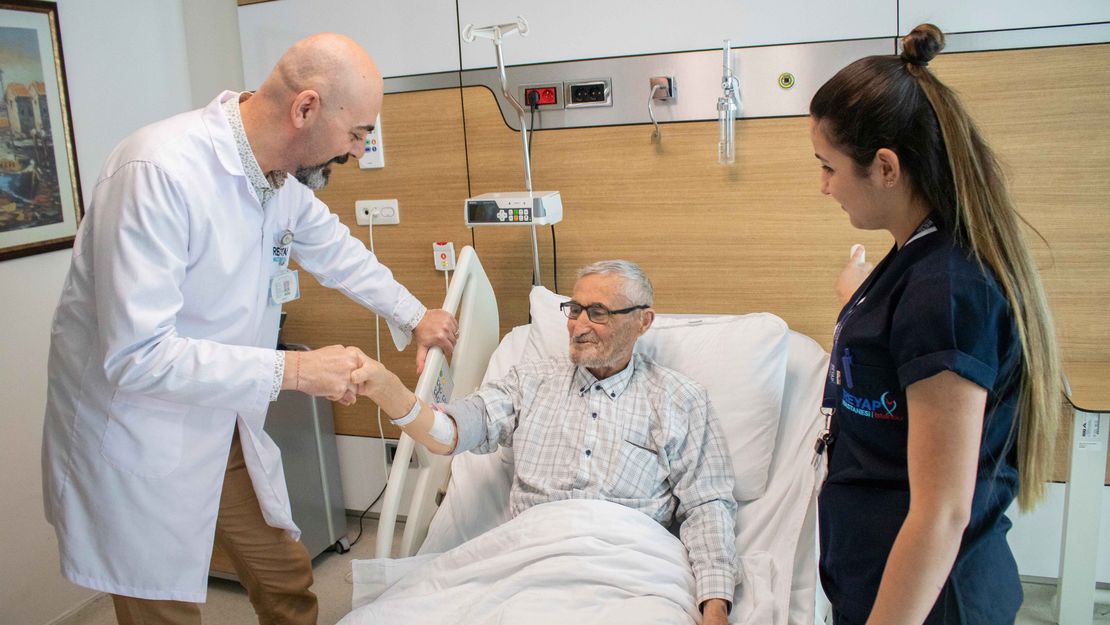Sugar affecting foot symptoms is one of the topics that diabetes patients are most curious about. Diabetic foot is a serious complication caused by nerve and vascular damage in the feet due to diabetes. This condition can be treated when diagnosed early, but can lead to serious consequences if delayed.
Prof. Dr. Aytaç Çetinkaya is a physician specialized in diabetic foot treatment with over 20 years of experience. In this article, we will discuss sugar affecting foot symptoms in detail.
What is Sugar Affecting Foot?
Sugar affecting foot is a term used in the community to describe diabetic foot syndrome. This condition occurs as a result of high blood sugar levels damaging the nerves and blood vessels in the feet.
Why Does Diabetic Foot Occur?
The main causes of diabetic foot formation are:
1. Nerve Damage (Neuropathy)
- Loss of sensation in feet
- Inability to feel pain
- Temperature sensitivity loss
- Muscle weakness
- Balance problems
2. Circulation Problems (Ischemia)
- Poor blood flow to feet
- Reduced oxygen supply
- Delayed wound healing
- Increased infection risk
- Tissue damage
3. Immune System Weakness
- Reduced infection resistance
- Slow healing process
- Increased complication risk
- Recurrence possibility
- Severity progression
Sugar Affecting Foot Symptoms
Early Stage Symptoms
1. Sensory Changes
- Numbness in feet
- Tingling sensation
- Burning pain
- Temperature changes
- Touch sensitivity loss
2. Circulation Problems
- Cold feet
- Color changes (pale, red, blue)
- Swelling
- Slow healing of minor wounds
- Hair loss on feet
3. Structural Changes
- Foot deformities
- Nail problems
- Skin changes
- Callus formation
- Ulcer development
Advanced Stage Symptoms
1. Foot Ulcers
- Open wounds on feet
- Infection signs
- Slow healing
- Recurrence
- Complication risk
2. Infection Symptoms
- Redness and swelling
- Warmth
- Pain
- Pus discharge
- Bad odor
3. Severe Complications
- Gangrene
- Bone infection
- Systemic infection
- Amputation risk
- Life-threatening conditions
Early Warning Signals
Daily Inspection Checklist
- Check feet daily for changes
- Look for wounds or ulcers
- Check for color changes
- Feel for temperature differences
- Check for swelling
Warning Signs Requiring Immediate Attention
- New wounds or ulcers
- Signs of infection
- Severe pain
- Color changes
- Temperature changes
Risk Factors
Diabetes-Related Factors
- Long-term diabetes
- Poor blood sugar control
- High HbA1c levels
- Diabetes complications
- Medication non-compliance
Lifestyle Factors
- Smoking
- Alcohol consumption
- Sedentary lifestyle
- Poor nutrition
- Stress
Other Factors
- Age
- Family history
- Other health conditions
- Foot deformities
- Previous foot problems
Prevention Strategies
Daily Foot Care
- Daily foot inspection
- Proper hygiene
- Moisturizing
- Nail care
- Comfortable shoes
Medical Follow-up
- Regular doctor visits
- Blood sugar monitoring
- Foot examination
- Treatment compliance
- Education and training
Lifestyle Modifications
- Healthy diet
- Regular exercise
- Smoking cessation
- Stress management
- Weight control
Treatment Options
Early Stage Treatment
- Blood sugar control
- Foot care education
- Regular monitoring
- Preventive measures
- Lifestyle changes
Advanced Stage Treatment
- Wound care and dressing
- Antibiotic therapy
- Surgical intervention
- Rehabilitation
- Long-term follow-up
Istanbul Diabetic Foot Expert Support
Istanbul diabetic foot centers provide comprehensive support:
Expert Team
- Diabetic foot specialists
- Wound care nurses
- Physical therapists
- Nutritionists
- Psychologists
Treatment Facilities
- Modern equipment
- Specialized units
- Emergency services
- Follow-up programs
- Patient education
When to Seek Medical Help
Emergency Situations
- Severe foot pain
- Signs of infection
- Foot wounds not healing
- Color changes
- Temperature changes
Regular Check-ups
- Monthly foot examination
- Quarterly specialist visit
- Annual comprehensive evaluation
- Blood sugar monitoring
- Treatment compliance
Conclusion
Sugar affecting foot symptoms should be recognized early and expert support should be sought. Diabetic foot is a serious condition that requires comprehensive care and management. Early diagnosis, appropriate treatment and preventive measures are crucial for maintaining foot health and preventing complications.
Important: Sugar affecting foot symptoms should not be ignored. Early intervention and expert support are essential for successful treatment and prevention of complications.
For more information about diabetic foot treatment, visit our treatment methods page.



